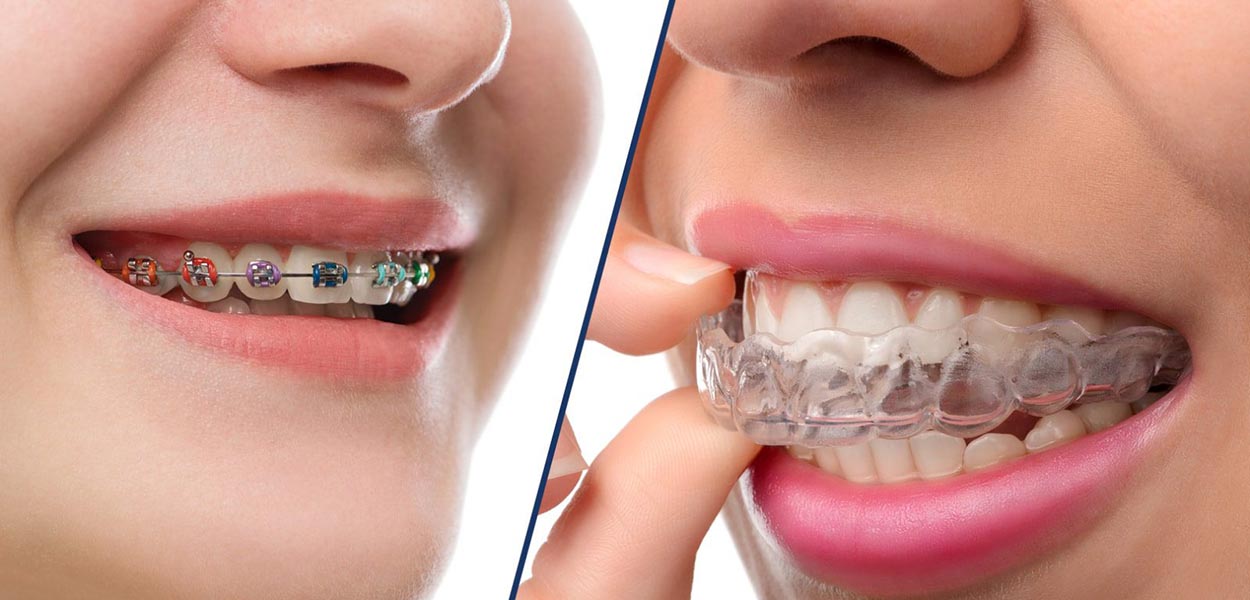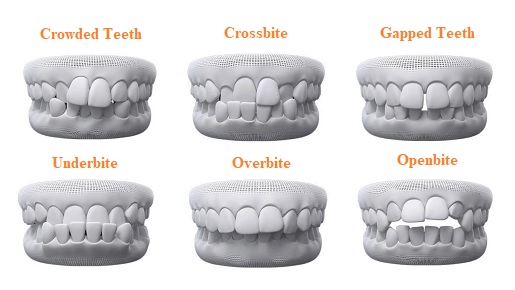The Cost of Invisalign: Comprehending the Investment in Your Smile
The Cost of Invisalign: Comprehending the Investment in Your Smile
Blog Article
Invisalign vs. Standard Dental braces: Which Alternative Is Right for You?
When thinking about orthodontic treatment, the choice between Invisalign and typical dental braces provides numerous vital variables that warrant cautious assessment. Invisalign offers a very discreet alternative with removable aligners, while typical dental braces give a much more visible yet effective service for extreme imbalance.
Introduction of Treatment Choices

In comparison, traditional braces include steel brackets and cords that are bound to the teeth. This approach applies continual pressure with time to accomplish placement. While effective for intricate orthodontic issues, standard dental braces require routine brows through for adjustments and can posture challenges in keeping dental health due to the problem of cleaning up about braces and wires.
Both options have their values, and the choice commonly rests on specific dental conditions, lifestyle preferences, and person compliance. Eventually, speaking with an orthodontic expert is vital for establishing one of the most ideal treatment plan tailored to individual needs. Understanding the nuances of each option can considerably influence the general success of orthodontic treatment.
Visual Considerations
A significant variable affecting the option between Invisalign and standard braces is the visual charm each treatment offers. Invisalign aligners are crafted from clear plastic, making them basically undetectable when put on.
On the other hand, standard braces are composed of metal braces and cables, which can be extra obvious. While developments in orthodontic technology have actually resulted in the growth of smaller brackets and tinted elastics, standard dental braces still preserve an even more obvious account. For some individuals, the visibility of dental braces might deter them from seeking necessary therapy.
Ultimately, the option in between Invisalign and conventional dental braces might depend upon individual preferences relating to appearances. Individuals that prioritize discretion commonly favor Invisalign, while those who are much less worried about exposure might choose typical braces. Comprehending the visual implications of each option is critical for making an educated decision that lines up with one's way of living and preferences.
Comfort and Convenience

In terms of benefit, Invisalign aligners are removable, enabling patients to appreciate their preferred foods without restriction and keep optimum oral hygiene. Cleaning and flossing are simplified, as the aligners can be taken out throughout these regimens, whereas standard braces call for cautious navigating around cables and brackets.
In contrast, standard braces demand regular adjustments, making them much less practical for those with hectic schedules. Generally, the convenience and benefit of Invisalign make it an enticing selection for many individuals site here seeking orthodontic therapy.
Therapy Period and Effectiveness
While both Invisalign and traditional dental braces work in dealing with dental misalignments, the period of therapy can differ considerably in between both you can find out more options. Usually, Invisalign treatment can take anywhere from 12 to 18 months, depending on the intricacy of the situation. The clear aligners function by gradually changing teeth into their wanted positions, and routine follow-ups with an orthodontist help make certain progress stays on track.
In contrast, typical dental braces commonly need a longer commitment, generally ranging from 18 months to 3 years. This is because of their fixed nature and using wires and brackets, which can be more efficient for serious misalignments and complicated situations (Invisalign). The treatment effectiveness of typical dental braces is well-documented, as they permit specific changes and better control over tooth activity
Ultimately, the choice in between Invisalign and standard braces might hinge on both the expected therapy duration and the specific dental problems at hand. Consulting with an orthodontist is essential, as they can give customized referrals based upon specific demands, guaranteeing the picked approach aligns with wanted durations and outcomes.
Price Comparison and Insurance Options
Price plays a considerable duty in the decision-making process for people considering orthodontic therapy, whether going with Invisalign or typical dental braces. Generally, the price of Invisalign ranges from $3,000 to $8,000, while traditional dental braces typically cost in between $2,000 and $6,000. Elements affecting these costs include the intricacy of the situation, the period of therapy, and geographical area.
Many dental insurance policy plans offer partial coverage for orthodontic treatments, but the specifics can vary widely. Normally, conventional dental braces might be a lot more often covered by insurance strategies compared to Invisalign, which some insurers classify as a cosmetic treatment.
Furthermore, numerous orthodontic techniques supply adaptable settlement plans, making both treatment alternatives more obtainable. Clients must ask about prospective financing choices and price cuts for in advance settlements. Reviewing the overall price, including insurance benefits and layaway plan, is try this website essential for making a notified decision that lines up with both visual choices and budget factors to consider.

Final Thought
In recap, the selection between Invisalign and conventional dental braces depends upon multiple factors, including aesthetic preferences, comfort, treatment duration, and expense. Invisalign supplies a discreet, removable alternative that helps with oral health and nutritional flexibility, while standard dental braces may be preferable for complicated dental issues and usually come at a lower rate point. Inevitably, examination with an orthodontist is vital to examine individual conditions and establish one of the most suitable treatment option for achieving ideal oral positioning.
When thinking about orthodontic treatment, the selection in between Invisalign and standard braces offers numerous important aspects that warrant mindful examination.Comparing Invisalign and conventional braces discloses unique treatment alternatives for orthodontic modification.While both Invisalign and conventional dental braces are reliable in fixing dental misalignments, the period of therapy can vary substantially in between the two options.Cost plays a significant role in the decision-making procedure for individuals taking into consideration orthodontic therapy, whether choosing for Invisalign or conventional braces.In summary, the choice in between Invisalign and traditional braces pivots on numerous elements, including visual choices, convenience, treatment duration, and expense.
Report this page